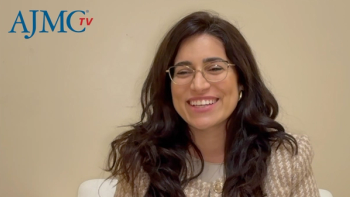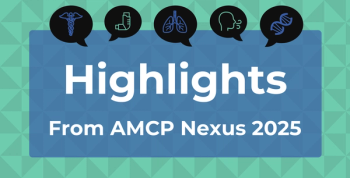
Navigating the Challenges of Pharma Distributor Partnerships: Natalie Bedford
Drug companies and specialty distributors navigate challenges like profitability, supply chain volatility, regulatory complexities, and market pressures to build successful partnerships, said Natalie Bedford of McKesson.
Drug companies and specialty distributors face significant hurdles in forging and sustaining successful partnerships, with key challenges including navigating profitability balances, supply chain volatility, complex regulatory landscapes, and competitive market pressures, explained Natalie Bedford, senior vice president, US pharmaceutical distribution services, McKesson.
This transcript has been lightly edited; captions were auto-generated.
Transcript
What are the biggest challenges in forming and maintaining partnerships between drug companies and specialty distributors?
That's a fun question to answer. I'm sure it depends on who you ask, both on the manufacturer partner side as well as the specialty distributor side. But I think I'd put it maybe into 4 buckets. The first, and maybe the more obvious one, is the negotiations, right? For me, it's finding a balance, or where both sides have the right profitability. But at the end of the day, you need to strike that balance where you're making sure that there's accessibility to the downstream mutual customers and patients that we serve. I think that's number one, and if you're not able to find that balance, it makes it really much more difficult to have a strategic partnership on many areas of your business.
The second area I think about is supply chain volatility. Whether it's drug shortages, whether there are customer issues, where there's issues with the product category, [or] regulatory changes, how do we work together to develop strategies or implement execution tactics that help us navigate the supply chain volatility to minimize disruption to mutual customers and patients?
The third is regulatory and compliance. I mean, that in itself, is a rather massive category, and given the heavily, heavily regulated landscape that we're in today, and that's going to continue to be much more complex, we need to find a way to understand the mutual goals or problems that we're solving for, and how can we implement paths to future success so at the end of the day, we can ensure the critical medicines that patients need get to them as quickly as possible.
The fourth would be competitive pressures and changing markets. As new therapies come to market, as new competitors [emerge]—whether it's on the pharma side, the distributor side, or even to our downstream, different customer segments—that means both of us together need to think about what are the strategies that we need to adapt to meet these changing market demands? I think the best strategic partnerships do that well by thinking about it ahead of time and planning for it versus reacting. They're one of the key things that we try to invest a lot of time in, again, to be a thought partner, so we're not reacting with the pharma partner and being strategically disadvantaged.
Newsletter
Stay ahead of policy, cost, and value—subscribe to AJMC for expert insights at the intersection of clinical care and health economics.













































